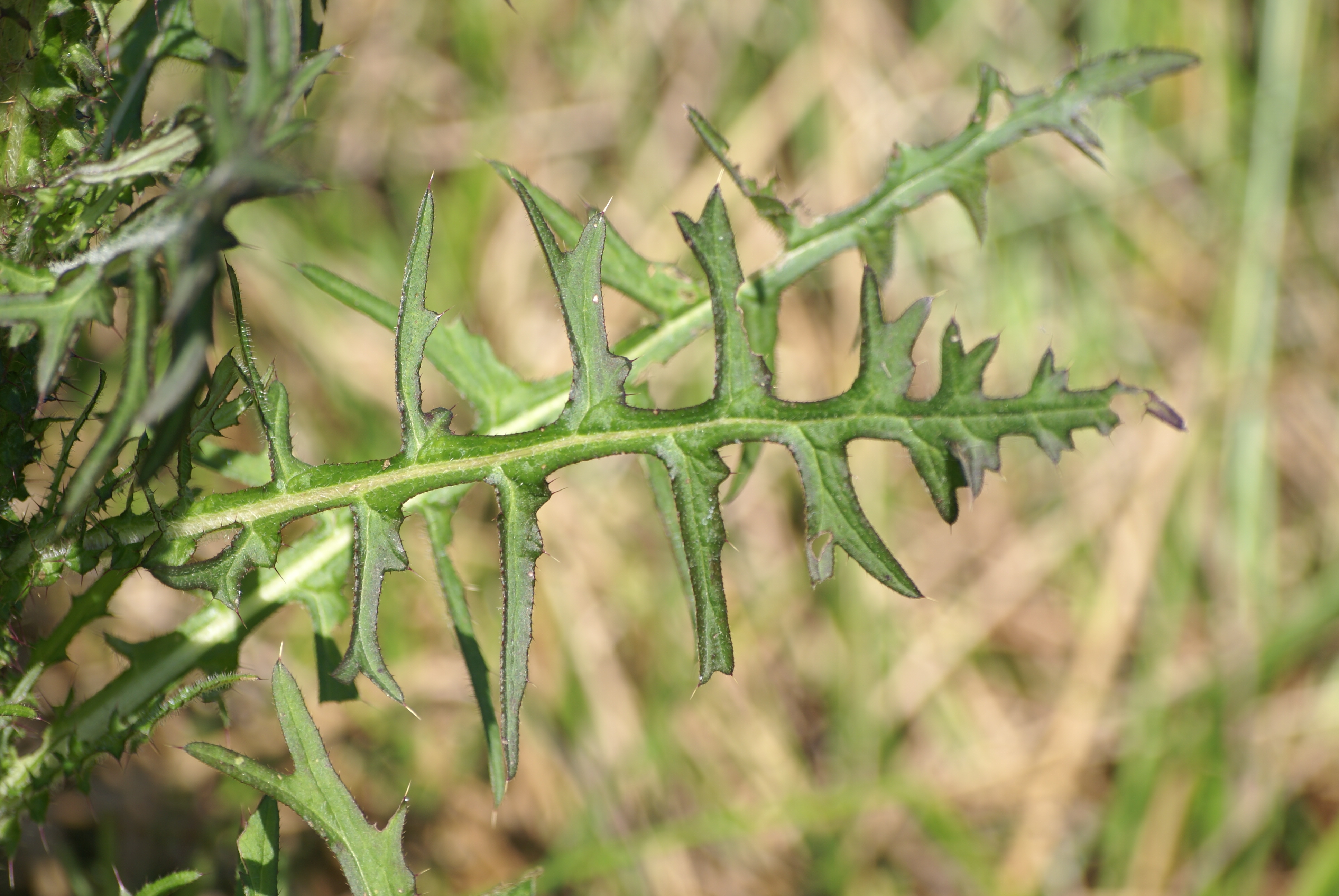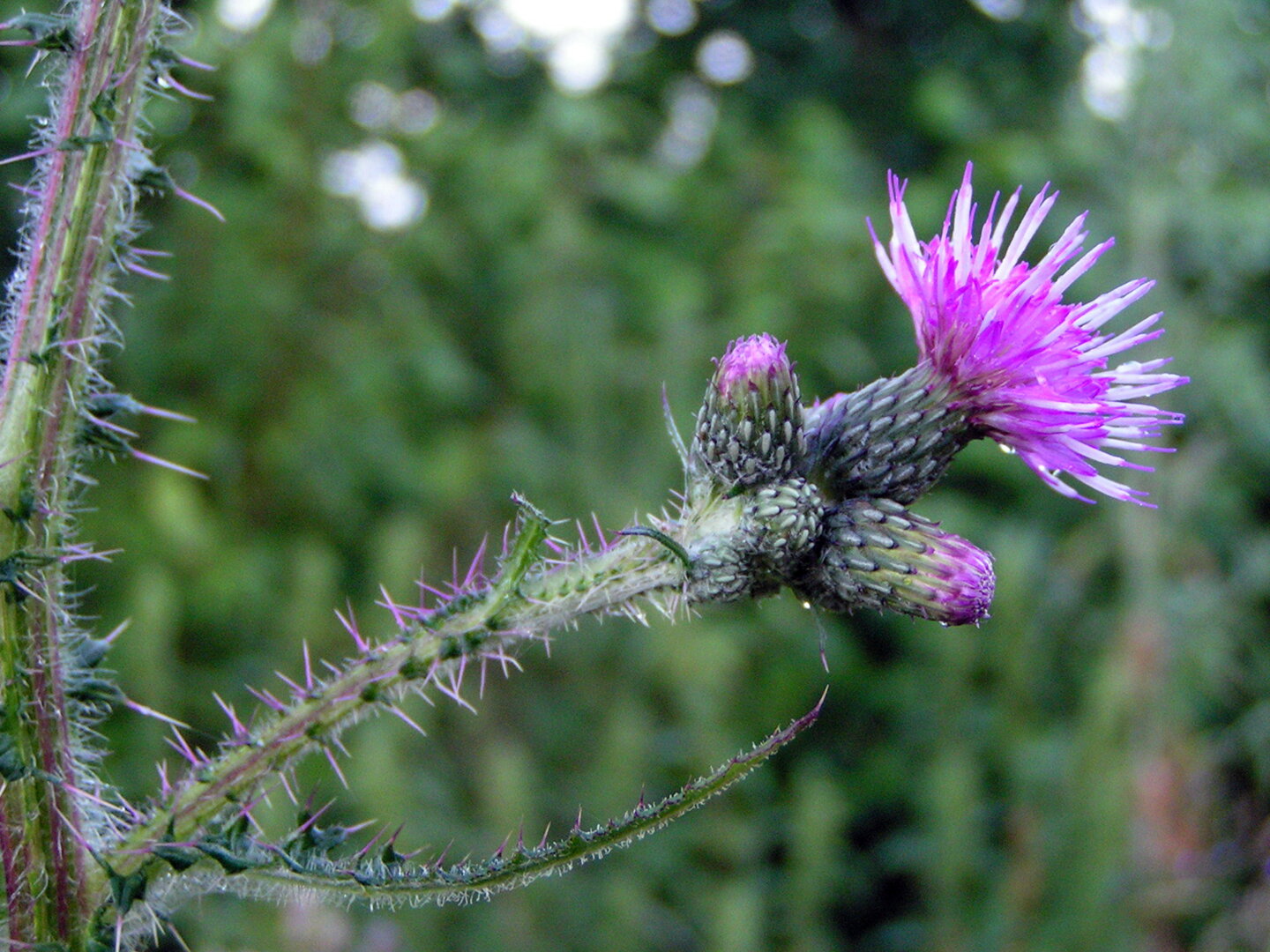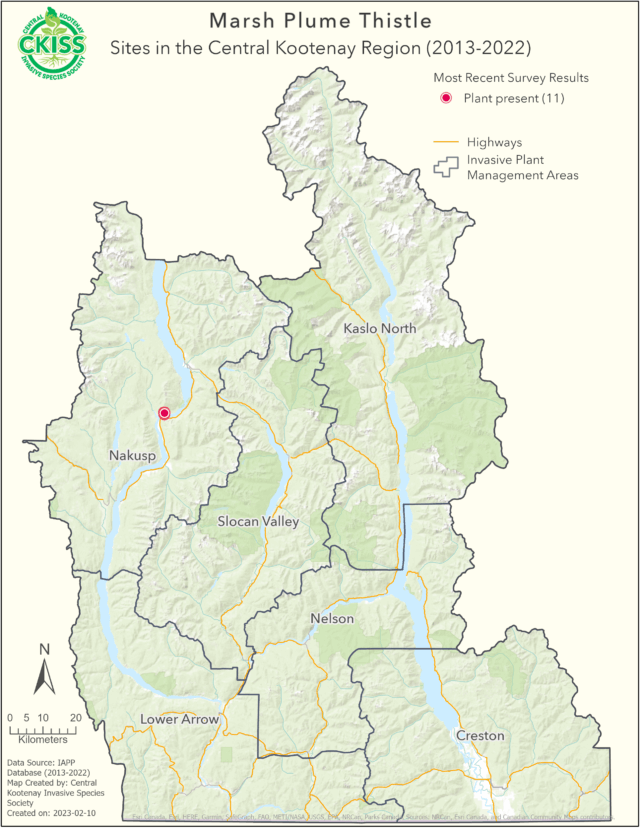Cirsium palustre
Description

- Purple flowers grow on the end of the single, often unbranched stem
- Stems and leaves are spiny and hairy
- Spiny wings are present along the stem
Introduction and spread
- First observed in 1910 in Newfoundland, now has limited distribution in BC
- Transported by vehicles, machinery, and humans.
- Spreads naturally by wind and animals
Consequences of invasion
- Invades moist to wet areas
- An aggressive competitor against tree seedlings and native vegetation
- Reduces biodiversity in wet meadow and riparian ecosystems
Status in the CKISS region
- Marsh plume thistle is classified as Eradicate on the CKISS Annual Priority List.
- It has only been found in the Nakusp Invasive Plant Management Area. Efforts are being made to eradicate this species within these locations and to prevent further spread to new areas.
- Please report any findings of this species immediately.
- To learn more about how CKISS classifies and manages invasive species, see our Invasive Species Priority Lists page.
Integrated pest management options
Prevention
- Minimize soil disturbances and occupy disturbed spaces by becoming PlantWise and planting non-invasive vegetation instead
- Clean equipment before leaving an infested area
Treatment
- Pull, mow, or dig plants before flowers are present.
- If flowers are present, manual treatment is still effective but the seed heads must be carefully bagged and properly disposed of at your local landfill.


